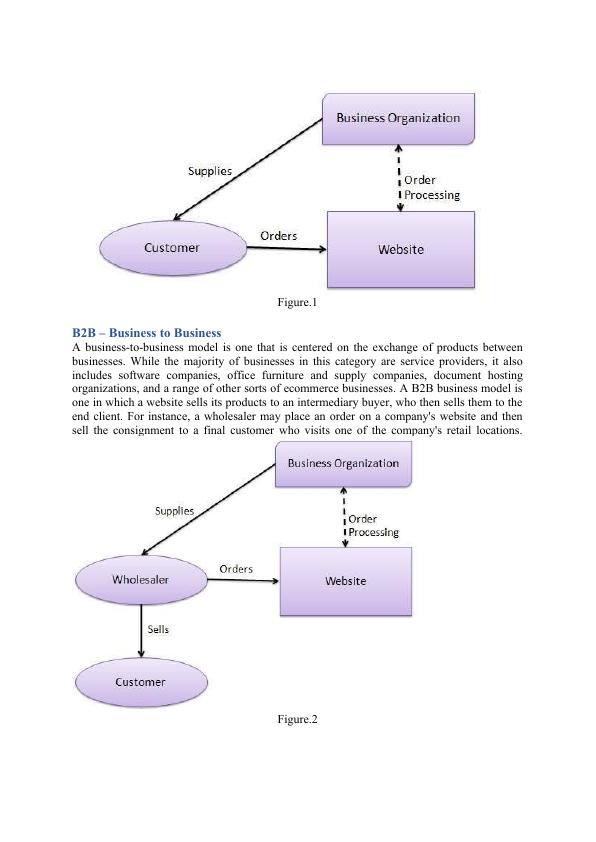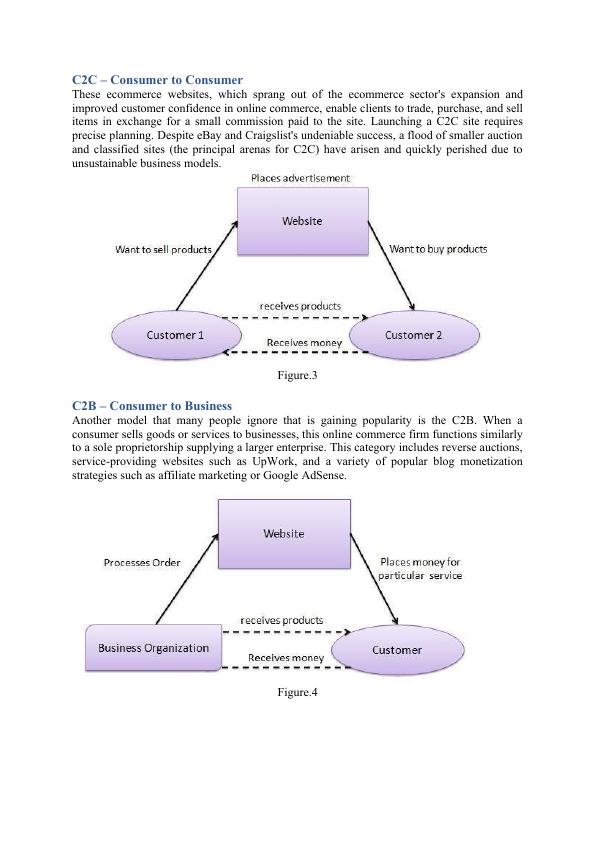inventive business models - digital entrepreneurs
Added on 2022-01-17
8 Pages3556 Words489 Views
Introduction
With their inventive business models, digital entrepreneurs have had a huge impact on the
entire world, particularly in the last decade. As a result of the epidemic, several firms saw the
importance of adapting their digital commerce business models to optimize their reach and
profit on the trend. Though it is a frequently used term, "digital disruption" has an ironic ring
to it due to the fact that it is not a true phenomena in the conventional sense. "So-called
digital disruption," as Christian Dreisbach recently noted, is just the modern world turning its
wheels and going forward at an ever-increasing rate. Rather than a new trend, it is simply the
way things are done at the moment. Global online retail sales are expected to climb by 25.7
percent to $4.213 trillion in 2020. This may have been an unachievable aim five, ten, or even
twenty years ago. Ecommerce has expanded in recent years, and even with the COVID-19
pandemic nearing an end, it is not anticipated to slow down very soon.
As more firms migrate their activities online or begin selling and purchasing their products
via online channels, the definitions of digital marketing and strategy have expanded. This
article will examine various new business models, the process of developing an online
platform, and the methods for profiting from this online company venture.
Digitalization of entrepreneurs and new Business Models
As previously said, many firms recognized the value of internet trade in the aftermath of the
pandemic. Because lockdowns pushed firms to see that consumers could simply purchase
food or groceries online, perform online consultations, or attend numerous seminars via
various platforms. People discontinue shopping because they know that there are more
worthwhile uses for their time than spending it in supermarkets. In the years 2020-2021,
people learned to value their time just by using their electronics. Businesses that had
abandoned e-commerce long ago began looking for alternatives and, more critically, began
integrating into the new digital environment.
Thus, many organizations find themselves gazing in the rearview mirror, unsure of the
variety of eCommerce models available and how to choose the one that is right for them - the
one that provides a "seamless consumer experience" while also aligning with their digital
business objectives.
There are several different sorts of digital business models: B2C (Business-to-Consumer),
B2B (Business-to-Business), C2B (Consumer-to-Business), and C2C (Consumer-to-
Consumer) (Consumer-to-Consumer).
B2C – Business to Consumers
Most individuals envision an ecommerce firm in the B2C market. This is the most mature
sector, and many of the names you'll see here are well-known offline as well. B2c ecommerce
sales are the classic retail model, in which a company sells to individuals but does so online
rather than in a physical store.
If consider this on the example of a website, then a B2C business model will be one in which
a website sells its items directly to the customer. A customer can look at the products that are
shown on the website. The customer can select a product and place an order for the same
item. The website will then send an email notification to the business organization, and the
business organization will subsequently ship the product/goods to the customer on the client's
behalf.
With their inventive business models, digital entrepreneurs have had a huge impact on the
entire world, particularly in the last decade. As a result of the epidemic, several firms saw the
importance of adapting their digital commerce business models to optimize their reach and
profit on the trend. Though it is a frequently used term, "digital disruption" has an ironic ring
to it due to the fact that it is not a true phenomena in the conventional sense. "So-called
digital disruption," as Christian Dreisbach recently noted, is just the modern world turning its
wheels and going forward at an ever-increasing rate. Rather than a new trend, it is simply the
way things are done at the moment. Global online retail sales are expected to climb by 25.7
percent to $4.213 trillion in 2020. This may have been an unachievable aim five, ten, or even
twenty years ago. Ecommerce has expanded in recent years, and even with the COVID-19
pandemic nearing an end, it is not anticipated to slow down very soon.
As more firms migrate their activities online or begin selling and purchasing their products
via online channels, the definitions of digital marketing and strategy have expanded. This
article will examine various new business models, the process of developing an online
platform, and the methods for profiting from this online company venture.
Digitalization of entrepreneurs and new Business Models
As previously said, many firms recognized the value of internet trade in the aftermath of the
pandemic. Because lockdowns pushed firms to see that consumers could simply purchase
food or groceries online, perform online consultations, or attend numerous seminars via
various platforms. People discontinue shopping because they know that there are more
worthwhile uses for their time than spending it in supermarkets. In the years 2020-2021,
people learned to value their time just by using their electronics. Businesses that had
abandoned e-commerce long ago began looking for alternatives and, more critically, began
integrating into the new digital environment.
Thus, many organizations find themselves gazing in the rearview mirror, unsure of the
variety of eCommerce models available and how to choose the one that is right for them - the
one that provides a "seamless consumer experience" while also aligning with their digital
business objectives.
There are several different sorts of digital business models: B2C (Business-to-Consumer),
B2B (Business-to-Business), C2B (Consumer-to-Business), and C2C (Consumer-to-
Consumer) (Consumer-to-Consumer).
B2C – Business to Consumers
Most individuals envision an ecommerce firm in the B2C market. This is the most mature
sector, and many of the names you'll see here are well-known offline as well. B2c ecommerce
sales are the classic retail model, in which a company sells to individuals but does so online
rather than in a physical store.
If consider this on the example of a website, then a B2C business model will be one in which
a website sells its items directly to the customer. A customer can look at the products that are
shown on the website. The customer can select a product and place an order for the same
item. The website will then send an email notification to the business organization, and the
business organization will subsequently ship the product/goods to the customer on the client's
behalf.

Figure.1
B2B – Business to Business
A business-to-business model is one that is centered on the exchange of products between
businesses. While the majority of businesses in this category are service providers, it also
includes software companies, office furniture and supply companies, document hosting
organizations, and a range of other sorts of ecommerce businesses. A B2B business model is
one in which a website sells its products to an intermediary buyer, who then sells them to the
end client. For instance, a wholesaler may place an order on a company's website and then
sell the consignment to a final customer who visits one of the company's retail locations.
Figure.2
B2B – Business to Business
A business-to-business model is one that is centered on the exchange of products between
businesses. While the majority of businesses in this category are service providers, it also
includes software companies, office furniture and supply companies, document hosting
organizations, and a range of other sorts of ecommerce businesses. A B2B business model is
one in which a website sells its products to an intermediary buyer, who then sells them to the
end client. For instance, a wholesaler may place an order on a company's website and then
sell the consignment to a final customer who visits one of the company's retail locations.
Figure.2

C2C – Consumer to Consumer
These ecommerce websites, which sprang out of the ecommerce sector's expansion and
improved customer confidence in online commerce, enable clients to trade, purchase, and sell
items in exchange for a small commission paid to the site. Launching a C2C site requires
precise planning. Despite eBay and Craigslist's undeniable success, a flood of smaller auction
and classified sites (the principal arenas for C2C) have arisen and quickly perished due to
unsustainable business models.
Figure.3
C2B – Consumer to Business
Another model that many people ignore that is gaining popularity is the C2B. When a
consumer sells goods or services to businesses, this online commerce firm functions similarly
to a sole proprietorship supplying a larger enterprise. This category includes reverse auctions,
service-providing websites such as UpWork, and a variety of popular blog monetization
strategies such as affiliate marketing or Google AdSense.
Figure.4
These ecommerce websites, which sprang out of the ecommerce sector's expansion and
improved customer confidence in online commerce, enable clients to trade, purchase, and sell
items in exchange for a small commission paid to the site. Launching a C2C site requires
precise planning. Despite eBay and Craigslist's undeniable success, a flood of smaller auction
and classified sites (the principal arenas for C2C) have arisen and quickly perished due to
unsustainable business models.
Figure.3
C2B – Consumer to Business
Another model that many people ignore that is gaining popularity is the C2B. When a
consumer sells goods or services to businesses, this online commerce firm functions similarly
to a sole proprietorship supplying a larger enterprise. This category includes reverse auctions,
service-providing websites such as UpWork, and a variety of popular blog monetization
strategies such as affiliate marketing or Google AdSense.
Figure.4

End of preview
Want to access all the pages? Upload your documents or become a member.
Related Documents
E-Business and Its Application: Strategies and Models for E-Commercelg...
|9
|578
|490
Role of Ecommerce and Advantages over High Street Presencelg...
|5
|1310
|82
Technology growth and innovation Assignment PDFlg...
|17
|2284
|117
Electronic Commerce Assignment PDFlg...
|10
|2939
|24
Selling Mobile Accessories: E-Business Reportlg...
|11
|3333
|278
Assignment on Ecommerce Start Up 2022lg...
|10
|2637
|34
